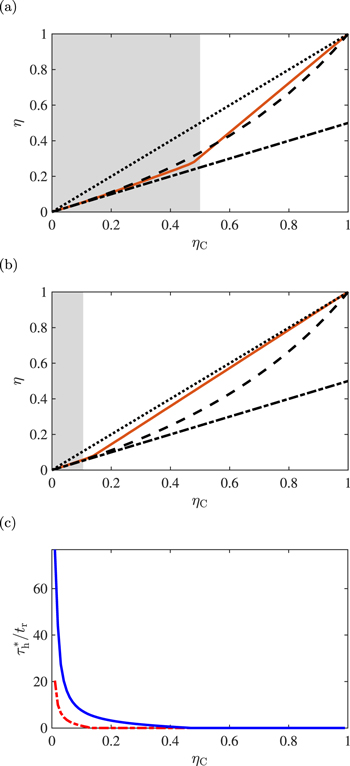Consistency of optimizing finite-time Carnot engines with the low-dissipation model in the two-level atomic heat engine

|
Consistency of optimizing finite-time Carnot engines with the low-dissipation model in the two-level atomic heat engine |
| Yu-Han Ma,C P Sun,Hui Dong |
| Figure 4. Efficiency at the maximum power ηMP (orange solid line) of the heat engine as the function of the Carnot efficiency ηC for different final energy spacing of the two level system(a) ${\omega }_{{\rm{h}}}^{{\rm{f}}}=0.6$ and (b) ${\omega }_{{\rm{h}}}^{{\rm{f}}}=0.9$. The black dashed line (black dash-dotted line) represents the upper bound η+ (lower bound η−) of EMP obtained with the low-dissipation model [equation ( |

|